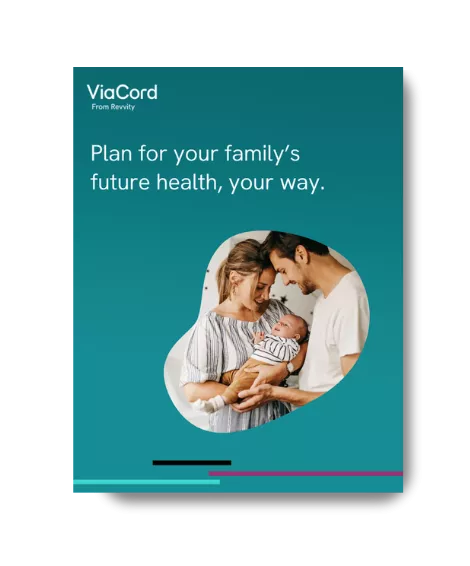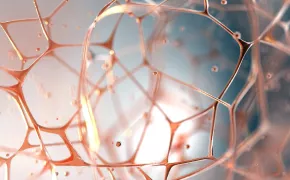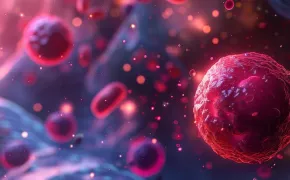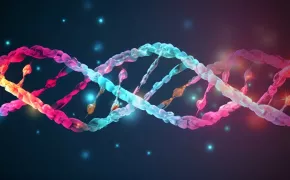How can cord blood and cord tissue be used?
Newborn stem cells from cord blood and cord tissue offer unique healing potential thanks to the distinct qualities of Hematopoietic Stem Cells (HSCs) found in cord blood and Mesenchymal Stem Cells (MSCs) found in cord tissue.
Proven Use: Cord Blood
Stem Cell Transplants
Cord blood has been a reliable, effective, and life-saving source of stem cells in transplant medicine for over 30 years. Hematopoietic Stem Cells (HSCs) collected from cord blood are "blood-forming" cells that can develop into red blood cells, white blood cells, or platelets. In a stem cell transplant, HSCs can be used to regenerate a new healthy blood and immune system in the patient.
Today, nearly 80 conditions can use cord blood stem cells to regenerate a healthy blood and immune system. Although most conditions are inherited genetic diseases, likely requiring a sibling or donor cells, a child's own cord blood may be used in certain cases, such as neuroblastoma. A physician will typically look for a family member as the first source of donated stem cells for a transplant.

Proven Uses
Nearly 80 Conditions
Blood Disorders
E-β+ thalassemia
E-βo thalassemia
HbSC disease
Sickle βo Thalassemia
Sickle-cell anemia (hemoglobin SS)
α-thalassemia major (hydrops fetalis)
β-thalassemia intermedia
β-thalassemia major (Cooley's anemia)
Cancers
Acute lymphoblastic leukemia (ALL)
Acute myeloid leukemia (AML)
Biphenotypic Leukemia
Burkitt's lymphoma
Chronic myeloid leukemia (CML)
Chronic myelomonocytic leukemia (CMML)
Hodgkin's lymphoma
Juvenile myelomonocytic leukemia (JMML)
Lymphomatoid granulomatosis
Mixed Lineage Leukemia
Myelodysplastic syndrome (MDS)
Myelofibrosis
Non-Burkitt’s lymphoma
Non-Hodgkin's lymphoma
Bone Marrow Failure Syndromes
Amegakaryocytic thrombocytopenia
Autoimmune neutropenia (severe)
Congenital dyserythropoietic anemia
Congenital sideroblastic anemia
Diamond-Blackfan anemia
Dyskeratosis congenita
Evan's syndrome
Fanconi anemia
Glanzmann's disease
Kostmann's syndrome (severe congenital neutropenia)
Severe aplastic anemia
Shwachman syndrome
Thrombocytopenia with absent radius (TAR syndrome)
Metabolic Disorders
Adrenoleukodystrophy Gaucher's disease (infantile)
Alpha mannosidosis
Fucosidosis
Gaucher's disease (infantile)
Gunther disease (congenital erythropoitic porphyria)
Hermansky-Pudlak syndrome
Hunter syndrome
Hurler syndrome
Hurler-Scheie syndrome
Krabbe disease (globoid cell leukodystrophy)
Lesch-Nyhan disease
Maroteaux-Lamy syndrome
Metachromatic leukodystrophy
Mucolipidosis Type II, III
Niemann Pick Syndrome, type A and B
Sandhoff Syndrome
Sanfilippo syndrome
Sly syndrome
Tay-Sachs Disease
Wolman Syndrome
Immunodeficiences
Adenosine deaminase deficiency
Ataxia telangiectasia
Chronic granulomatous disease
Complete IFN-γ Receptor 2 Deficiency
DiGeorge syndrome
IKK gamma deficiency
Immune dysregulation polyendocrineopathy
Leukocyte adhesion deficiency
LRBA deficiency
Myelokathexis X-linked immunodeficiency
Omenn's syndrome
Reticular dysplasia
Severe combined immunodeficiency (SCID)
Thymic dysplasia
Wiskott-Aldrich syndrome
X-linked agammaglobulinemia
X-linked lymphoproliferative disease
X-linked Mucolipidosis, Type II
Other Conditions
Epidermolysis bullosa
Hemophagocytic lymphohistiocytosis
Juvenile dermatomyositis
Langerhans cell histiocytosis
Osteopetrosis
Potential Use: Cord Tissue + Cord Blood
Regenerative Medicine Clinical Trials
Regenerative medicine is the use of living cells to potentially regenerate or facilitate repair by stimulating the body's self-healing's abilities. The unique qualities of cord tissue stem cells and cord blood stem cells have attracted attention from researchers interested in exploring potential applications in regenerative medicine for certain conditions.
Cord Tissue
Mesenchymal Stem Cells (HSCs)
Potential to regulate immune response, reduce inflammation, and stimulate tissue repair.
Examples of conditions explored:
- Parkinson's
- Alzheimer's
- Rheumatoid Arthritis
- Lupus
- Muscular Sclerosis
Cord Blood
Hematopoietic Stem Cells (HSCs)
Potential to decrease inflammation, help heal damaged tissue, and repair organs.
Examples of conditions explored:
- Cerebral Pasly
- Cardiac
- Acquired Hearing Loss
- Type 1 Diabetes
- Autism
Nearly 600 Families
How ViaCord families are using cord blood
Nearly 600 families have used their cord blood stored with ViaCord in a stem cell transplant or regenerative medicine clinical trial. Many ViaCord families have had the opportunity to participate in regenerative medicine clinical trials where a child received an infusion of his/her own cord blood.
- Image

Cord Blood & Cerebral Palsy
Patrick's Story
Patrick's family shares their journey, from diagnosis to using his own cord blood in a clinical trial for cerebral palsy.
- Image
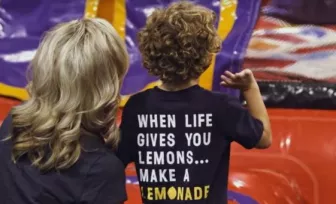
Brady's Story
Cord Blood
The Krebbs banked Brady's cord blood hoping one day it could be used for Type 1 diabetes. They never imagined they'd need to use it so soon, for a completely different reason.
Only with ViaCord
Unlock Genetic Health Insights using Cord Blood
Only ViaCord is harnessing the power of cord blood & DNA to help parents unlock useful genetic health insights for their child. Cord blood holds a wealth of health information and ViaCord can mine through the data using a small sample of cord blood to provide parents useful genetic health insights to support their child’s health journey. Banking cord blood with ViaCord gives you access to these additional newborn tests - no additional collection required, and no impact on the quantity or quality of stem cells banked for your family.
Newborn Digestive Health
Provides genetic insights into a child’s predisposition for both celiac disease and primary lactose intolerance.
View Service
Genetic Insights Panel
Analyzes 290+ genes with known associations to medically actionable childhood onset-conditions and drug sensitivities.
View Service
Whole Genome Sequencing
Sequence all 22,000 genes and analyze 2,500 genes with known associations to childhood onset-conditions and drug sensitivities.
View Service
Newborn DNA Guardian
Parents can preserve a sample of newborn DNA found in umbilical cord cells for potential genomic testing in the future.
View Service
Who can use your baby's cells?
There is often confusion over who can use your baby’s cord blood and cord tissue cells. There are specific factors that determine who may be able to use the cells, including the medical condition being treated and the availability of a compatible donor (match). Match means compatibility is adequate to be considered for clinical use. Ultimately, the treating physician will make the final decision.
CORD BLOOD + CORD TISSUE
Your Baby100% Match
Your baby is 100% Match to their own stem cells. Your baby may be able to use his or her own cord blood in the treatment of certain non-genetic diseases and cancers, or regenerative medicine research.
CORD BLOOD + CORD TISSUE
Sibling up to 75% Match
Full siblings have a 25% chance of being a perfect match and a 50% chance of being a partial match. A physician will typically look for a family member as the first source of donated stem cells for a transplant.
Quality Matters
The quality of the banked stem cells also contributes to their usability. This is to consider when choosing a stem cell bank. ViaCord’s Processing & Storage Lab is:
- FDA registered, CLIA certified, and accredited by the AABB (Association for the Advancement of Blood & Biotherapies)
- The only family bank accredited by the AABB for processing and storing newborn stem cells from both umbilical cord blood and cord tissue.
- Designed for sterility and equipped with the same freezers used by major research institutions such as National Institutes of Health and the CDC.

Plan for your family’s future health, your way.
Explore the many ways your newborn’s umbilical cord can help you plan for your family’s future health and well-being.
